Valuable genetic material for cultivated rice
Looking back at the records and research documents on wild rice, Dr. Nguyen The Cuong - Head of the Department of Agronomy (Mekong Delta Rice Institute) said that wild rice is the "ancestor" of cultivated rice and appeared in the evolutionary process about 14 - 15 million years ago.
To date, scientists around the world have discovered about 22 species of wild rice, of which Vietnam has 4 species. Notably, 2 of these species are found in the Mekong Delta region: Oryza rufipogon and Oryza officinalis .

In the Mekong Delta, two wild rice species with valuable genetic resources have been found. If exploited effectively, they could create a breakthrough in rice breeding. Photo: Kim Anh.
According to Dr. Cuong, wild rice Oryza officinalis provides a very valuable genetic resource and has been used as hybrid material to introduce genes with brown planthopper resistance traits into cultivated rice varieties. Wild rice Oryza rufipogon is considered particularly valuable because of its ability to withstand salinity, flooding, and adapt well to hot temperatures in the context of climate change as well as in soil environments lacking phosphorus. These are very necessary traits in breeding new rice varieties.
However, in the past, the use of wild rice to exploit genes with valuable traits for breeding is still quite limited, although there have been methods to introduce valuable genes of wild rice (gene cloning) into cultivated rice and create QTL (Quantitative trait loci) maps to determine the location of genes or chromosome regions related to complex traits.
If valuable genes from wild rice are effectively exploited, a breakthrough can be made in the selection and breeding of sustainable rice varieties that are better adapted to rapidly changing and harsh environments and climates.
Unlike cultivated rice, wild rice has its own ecological and biological characteristics: the stem can collapse when on land or float in water; the rice grains are small, fall easily, the seed coat is dark; high dormancy slows down the germination process. Many wild rice species are sensitive to day length, the grain size is smaller than cultivated rice, and the grain yield varies greatly. It is these "unusual" characteristics that have helped wild rice survive, adapt and evolve continuously in nature over the past millions of years.
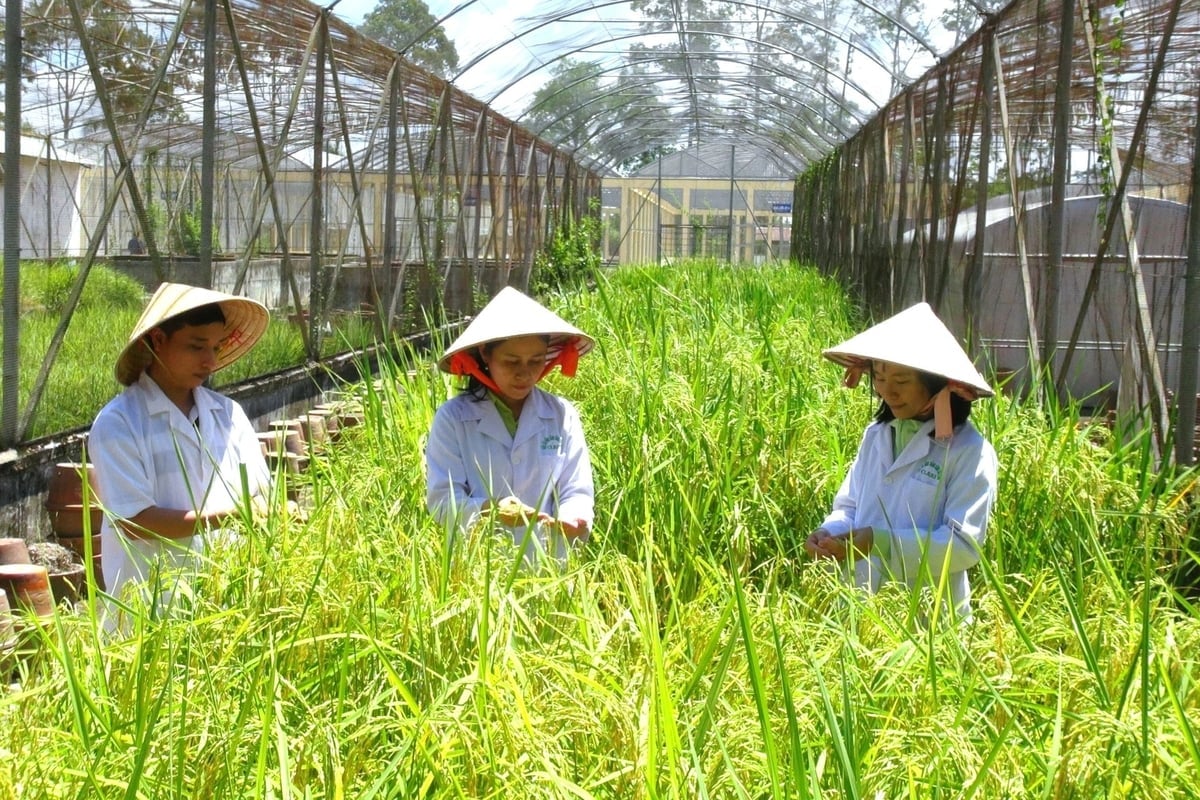
Wild rice has ecological and biological characteristics that are very valuable in breeding new rice varieties. Photo: Kim Anh.
Another notable feature is that the genome of wild rice is more stable than cultivated rice in the evolutionary process due to the lack of human intervention through domestication, thus having the ability to preserve the natural genome more, helping to supplement valuable genetic material for cultivated rice. In addition, when in the natural environment, it will continue to evolve and genetic diversity will increase.
In Vietnam, although wild rice conservation has received attention, there are no large-scale programs. Some wild rice conservation models have been implemented in Tram Chim National Park ( Dong Thap province) through the preservation of seed gene banks in low temperature conditions (at minus 70 degrees Celsius or from minus 10 to minus 20 degrees Celsius). This helps to preserve wild rice for many years without losing genetic diversity.
Therefore, the “dynamic” conservation method in nature is the optimal form. Wild rice is allowed to grow in its natural environment, continue to evolve and maintain genetic diversity.
Today, many countries regard wild rice as a particularly rare national resource. China has discovered more than 10 species of wild rice, which are strictly protected in biological reserves. Some places even completely prohibit human entry to avoid affecting the natural growth process.
In Thailand, the government also maintains wild rice gene reserves as part of its national food security strategy.
Preserving a "living gene bank"
Lung Ngoc Hoang Nature Reserve (Phuong Binh Commune, Can Tho City) is a rare place that still preserves many wild rice populations of great scientific and economic value.
Mr. Le Thanh Son - Deputy Director in charge of the Conservation Area said that wild rice is scattered under the forest canopy or along canals, growing in small but widespread clumps so the exact area cannot be determined.
In places with good water exchange, wild rice grows green and strong. Along the canals with tidal and alluvial deposits, rice grows more vigorously due to less biological competition.

Staff of the Department of Wetland Science and Conservation (Lung Ngoc Hoang Nature Reserve) check the growth of wild rice. Photo: Kim Anh.
Identifying wild rice as a valuable genetic resource contributing to maintaining ecological balance, the Lung Ngoc Hoang Nature Reserve Management Board has proposed that the Can Tho City People's Committee plan to coordinate with scientists to determine the distribution area and evaluate the growth status of these rice varieties. At the same time, research suitable ecological conditions, build and test a model for restoration and sustainable development as well as find solutions for long-term management and conservation of wild rice.
Mr. Tran Be Em - Head of the Department of Wetland Science and Conservation (Lung Ngoc Hoang Nature Reserve) said that from 2015 to now, the Reserve has added 981 plant species to the list, building a biodiversity database. In which, wild rice is identified as a key research subject.
The unit is currently focusing on investigating the distribution, conducting field surveys, and mapping the distribution of wild rice. The focus is on selecting 1-2 hectares in the ecological restoration sub-area for long-term restoration and conservation. The steps include clearing weeds, cleaning the area, replanting, monitoring growth, and collecting data to build a scientific basis for long-term conservation.
According to Mr. Bé Em, the life cycle of wild rice begins every April when the rainy season arrives. Wild rice seeds germinate, the stems grow tall, the leaves are large, and the roots have the ability to neutralize acidity and absorb nutrients from the soil.
From August to December, the rice plants grow long and bloom. The rice flowers are large and straight, but the grains are small and sparse. When ripe, the grains fall off by themselves, drift with the water, and grow into new plants.
“Wild rice only ripens once a year and has good genes that are resistant to brown planthoppers and white-backed planthoppers. The rice flowers in October and ripens sporadically from November to December, not ripening as much as cultivated rice,” said Mr. Be Em.

Conservation of wild rice contributes to preserving the pristine values of nature. Photo: Kim Anh.
From the perspective of a research institution, Dr. Nguyen Thuy Kieu Tien - Deputy Director of the Mekong Delta Rice Institute, assessed that Lung Ngoc Hoang has a long history of the existence and development of wild rice with rich and diverse genetic resources. However, the area of wild rice is increasingly shrinking due to the impact of agricultural cultivation and aquaculture, gradually losing valuable genetic resources.
In addition to research, the Lung Ngoc Hoang Nature Reserve Management Board has built a biodiversity database to store information, research and breed varieties. At the same time, it focuses on preserving native habitats, preserving rare species, and monitoring invasive alien species. This work helps protect the integrity of the ecosystem, avoiding the risk of encroachment that reduces the wild rice population.
These efforts will contribute to maintaining ecological balance, preserving valuable genetic resources in nature and creating the premise for research on breeding high-quality rice varieties that adapt to climate change. Above all, the conservation of wild rice also has profound humanistic significance, preserving the pristine values of nature, and is a bridge between scientific knowledge and indigenous ecosystems.
“Wild rice is an important genetic resource for new breeding programs. Not only exploiting diverse variations from crossbreeding between wild rice and high-yielding rice, scientists can also take advantage of valuable characteristics to create well-adapted rice varieties. Therefore, conserving wild rice in Lung Ngoc Hoang is urgent and strategic,” Dr. Kieu Tien emphasized.
Source: https://nongnghiepmoitruong.vn/luu-giu-to-tien-cua-cay-lua-d780375.html













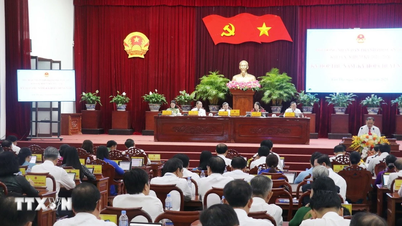


![The person who 'broke the fence' for Dat Cang's agriculture: [Part 2] Preserving the value of Doan Xa land](https://vphoto.vietnam.vn/thumb/402x226/vietnam/resource/IMAGE/2025/11/10/1762727497156_2926-nguoi-xe-rao-mo-loi-cho-san-xuat-nong-nghiep-dat-cang-165925_730.jpeg)

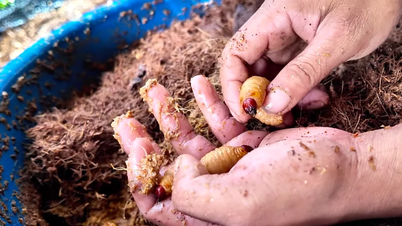









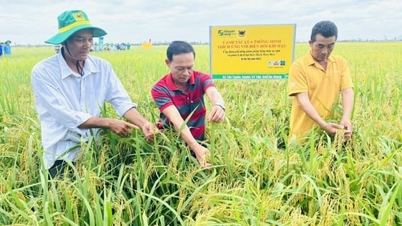
![Dong Nai OCOP transition: [Part 2] Opening new distribution channel](https://vphoto.vietnam.vn/thumb/402x226/vietnam/resource/IMAGE/2025/11/09/1762655780766_4613-anh-1_20240803100041-nongnghiep-154608.jpeg)


















































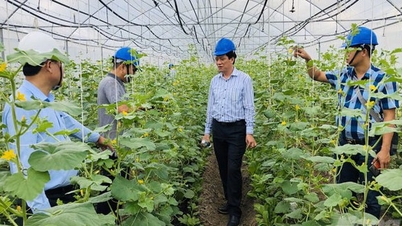
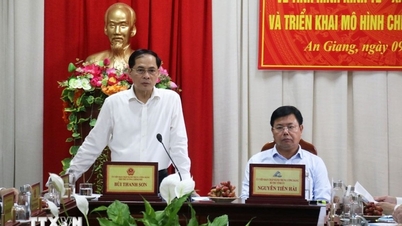











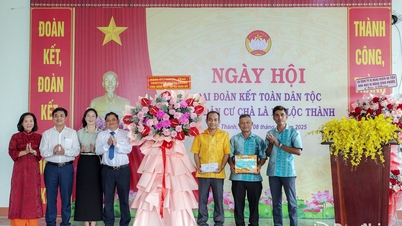













Comment (0)